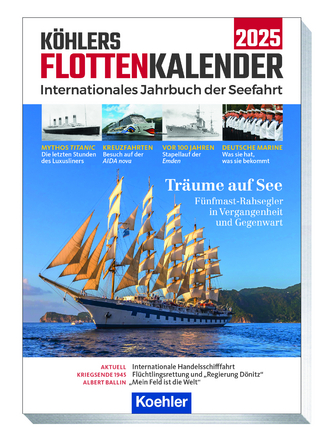
Impact of Operational Conditions of Icebreaker Ships on the Optimal Type of Propulsion System
Seiten
2020
Nova Science Publishers Inc (Verlag)
978-1-5361-6480-0 (ISBN)
Nova Science Publishers Inc (Verlag)
978-1-5361-6480-0 (ISBN)
For a large number of countries, the task of Arctic exploration and implementation of year-round navigation along the Northern Sea Route, which has become a reality today due to global warming, has become increasingly relevant in recent years. In turn, its solution requires the creation of a multi-purpose Arctic fleet, consisting of modern icebreaker ships with efficient and fault-tolerant propulsion systems, fully compliant with the specific operational conditions of the Arctic. In the last decade, due to the significantly increased interest to the new transport connection between West Europe and the Far East and the growth of various cargo traffic (oil, gas, containers, etc.) by the Northern Sea Route, the need of a significant increase of quantity and capacity of icebreaker cargo fleet has appeared. In order to maintain year-round navigation in the Northern Sea Route in the next few years, ships for various purposes are planned to be built (multipurpose and universal ships, supply ships, lighters, oil and gas tankers, hovercrafts, and others), which are intended for operation in the seas of the Arctic basin. Comprehensive efficiency of transportation process in the Arctic seas depends not only on the planning and co-ordination activities of the fleets and harbors, but also on the ships' technical characteristics. It means that icebreaker ships should have appropriate special features, accordingly to the requirements for navigation in the Arctic ice conditions. The results of the presented scientific research, which are based on statistical operational data from the 1980s, determined the main directions for development of today's modern icebreaker ships designed for Arctic operation in specific ice conditions. Considering that the projects of year-round navigation along the Northern Sea Route, which have become a reality today, the task of creating corresponding ships with highly reliable and fault-tolerant electric propulsion systems is extremely relevant today. The proposed systematic methodology of the choice of the appropriate type of propulsion system for icebreaker cargo Arctic ships was confirmed by many years of successful operational experience in the ice navigational conditions. During the design process of icebreaker ships, the question about choice of ship's propulsion system arises, taking into account a power-producing unit and propeller, coupled with the frame of the ship. The correct solution of this problem has a significant value for the further operation of the ship. The aim of this book is to provide a comprehensive presentation of multicriteria operational efficiency analysis of the competing ship's propulsion systems that would be most suitable for icebreaker Arctic ships, taking into account the real operating conditions of ice navigation.
Igor Bolvashenkov, Senior Researcher, Technical University of Munich, Munich, Germany
Preface; Introduction; Methodology to Select the Appropriate Type of Propulsion System; The Local Indicators of Icebreaker Ships in Operational Modes; Models to Compare Comprehensive Efficiency of Propulsion Systems in Operational Conditions; Comprehensive Efficiency of Icebreaker Ships with Different Propulsion Systems; Conclusion; Bibliography; List of Abbreviations; List of Figures; List of Tables; Appendices.
| Erscheinungsdatum | 29.06.2020 |
|---|---|
| Sprache | englisch |
| Gewicht | 276 g |
| Themenwelt | Natur / Technik ► Fahrzeuge / Flugzeuge / Schiffe ► Schiffe |
| Technik | |
| ISBN-10 | 1-5361-6480-1 / 1536164801 |
| ISBN-13 | 978-1-5361-6480-0 / 9781536164800 |
| Zustand | Neuware |
| Haben Sie eine Frage zum Produkt? |
Mehr entdecken
aus dem Bereich
aus dem Bereich
internationales Jahrbuch der Seefahrt
Buch | Softcover (2024)
Koehler in Maximilian Verlag GmbH & Co. KG
CHF 35,90


